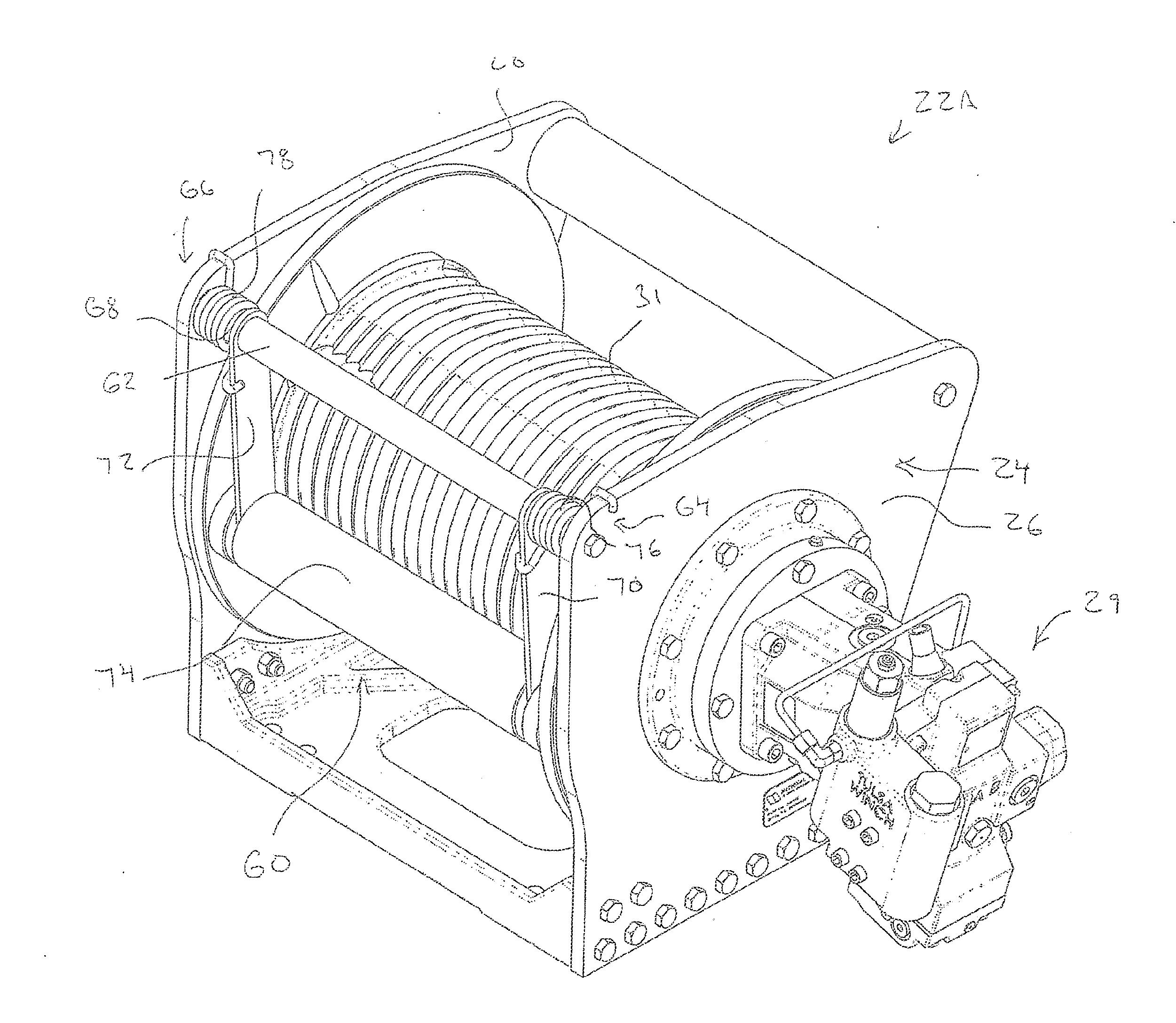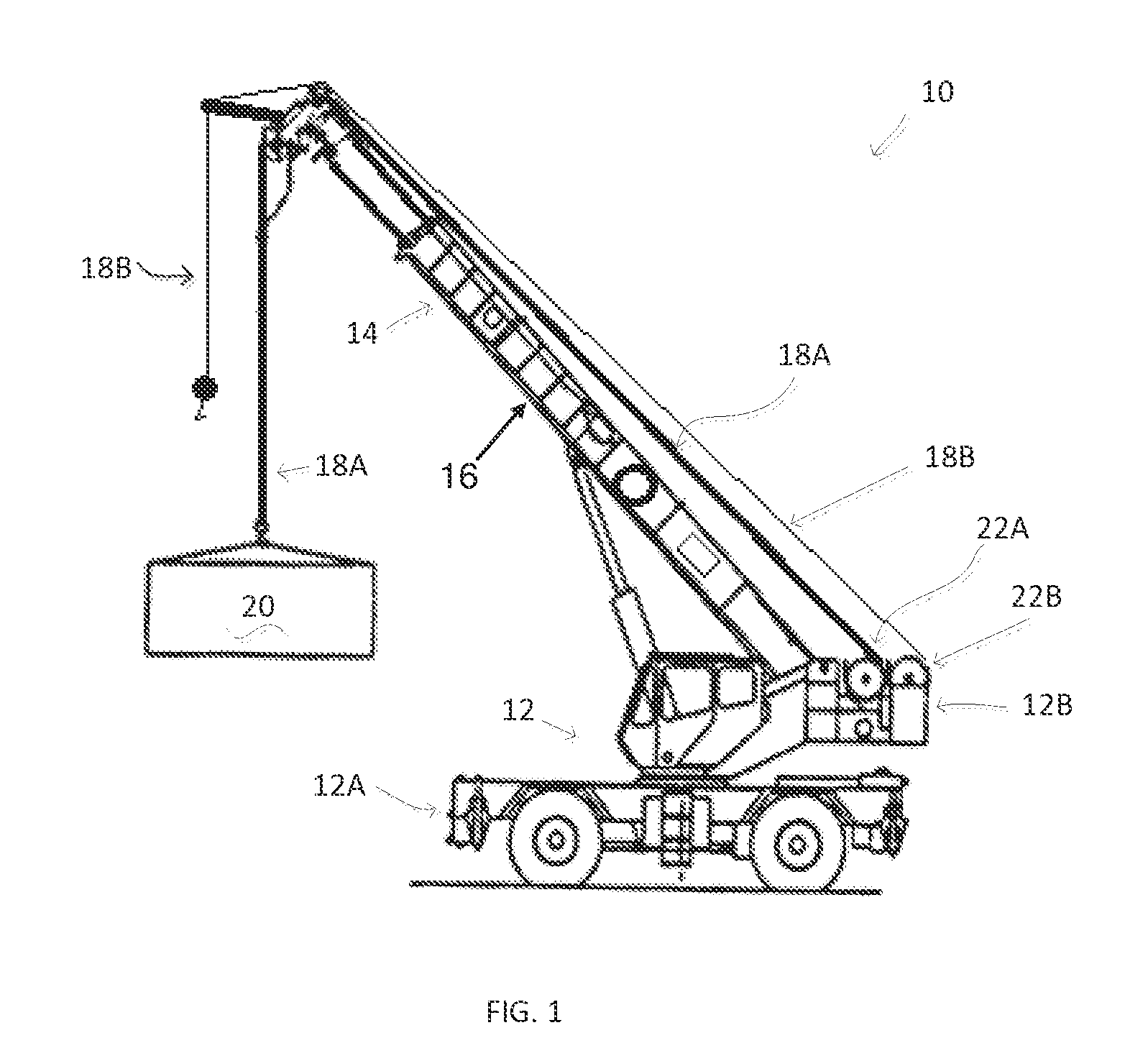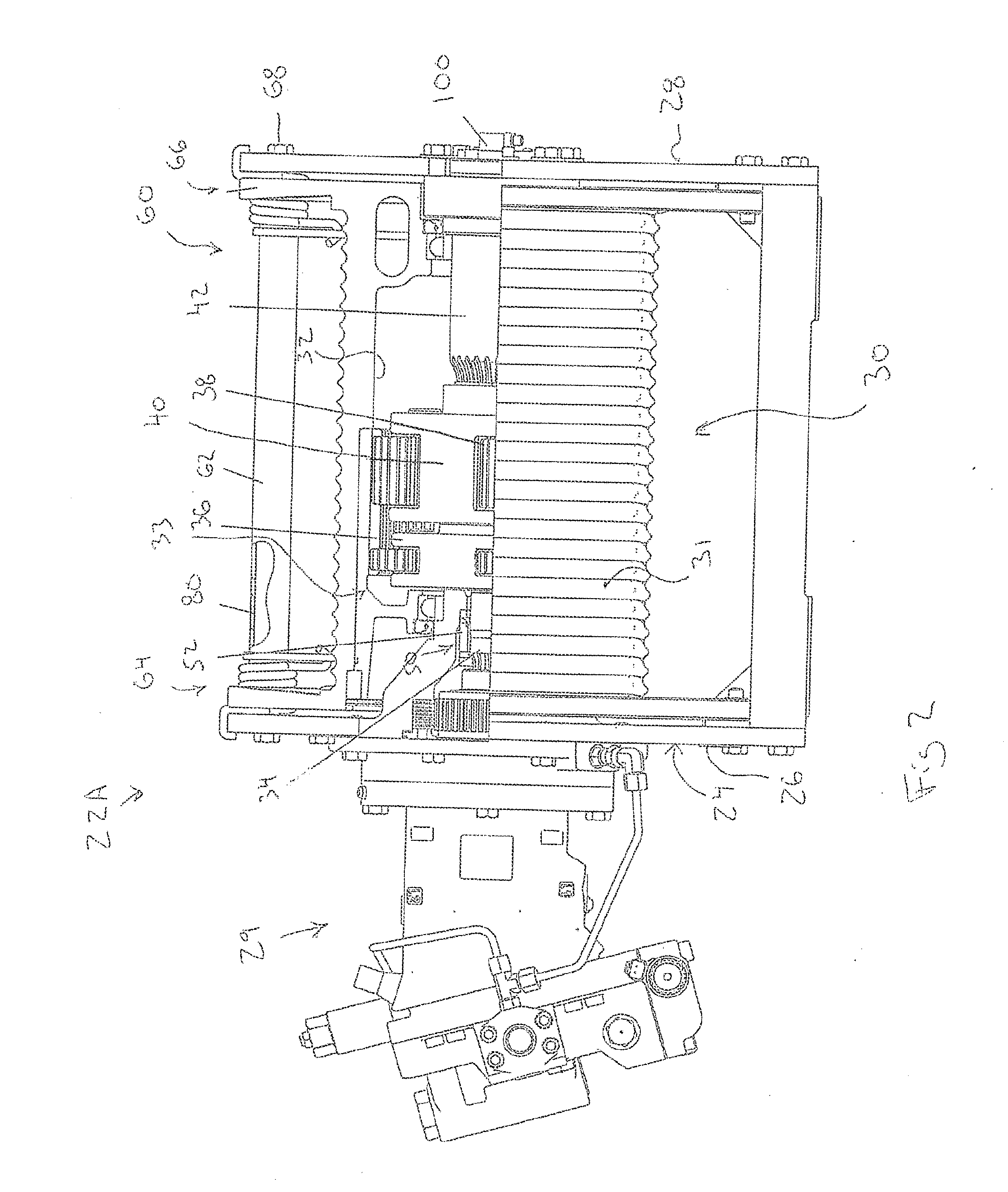Embedded hoist human-machine interface
a human-machine interface and embedded technology, applied in the field of hoists, can solve the problems of affecting the operation of hoists,
- Summary
- Abstract
- Description
- Claims
- Application Information
AI Technical Summary
Benefits of technology
Problems solved by technology
Method used
Image
Examples
Embodiment Construction
[0022]Various crane designs may rely on a load moment indicator (LMI) system that derives the load on the crane hook while simultaneously displaying an allowable load value to the operator. This LMI, sometimes referred to as a rated capacity indicator (RCI), or rated capacity limiter (RCL), also displays the percentage of safe working load, the boom length, the boom angle, the swing angle, and the radius of the load from the centerline of rotation of the boom. The LMI also provides visual and audible warnings of overload, two-blocking, and other crane conditions. The LMI calculates and displays these values in real time, using values derived from multiple sensors on the crane, including boom hydraulic pressure sensors, boom angle sensors, boom length sensors, and swing rotation sensors.
[0023]Allowable load may be calculated from the boom length, boom angle, crane geometric data, and a crane-OEM-provided duty chart. The duty chart is a map of the allowable load for possible positions...
PUM
| Property | Measurement | Unit |
|---|---|---|
| length | aaaaa | aaaaa |
| torque | aaaaa | aaaaa |
| tension | aaaaa | aaaaa |
Abstract
Description
Claims
Application Information
 Login to View More
Login to View More - R&D
- Intellectual Property
- Life Sciences
- Materials
- Tech Scout
- Unparalleled Data Quality
- Higher Quality Content
- 60% Fewer Hallucinations
Browse by: Latest US Patents, China's latest patents, Technical Efficacy Thesaurus, Application Domain, Technology Topic, Popular Technical Reports.
© 2025 PatSnap. All rights reserved.Legal|Privacy policy|Modern Slavery Act Transparency Statement|Sitemap|About US| Contact US: help@patsnap.com



